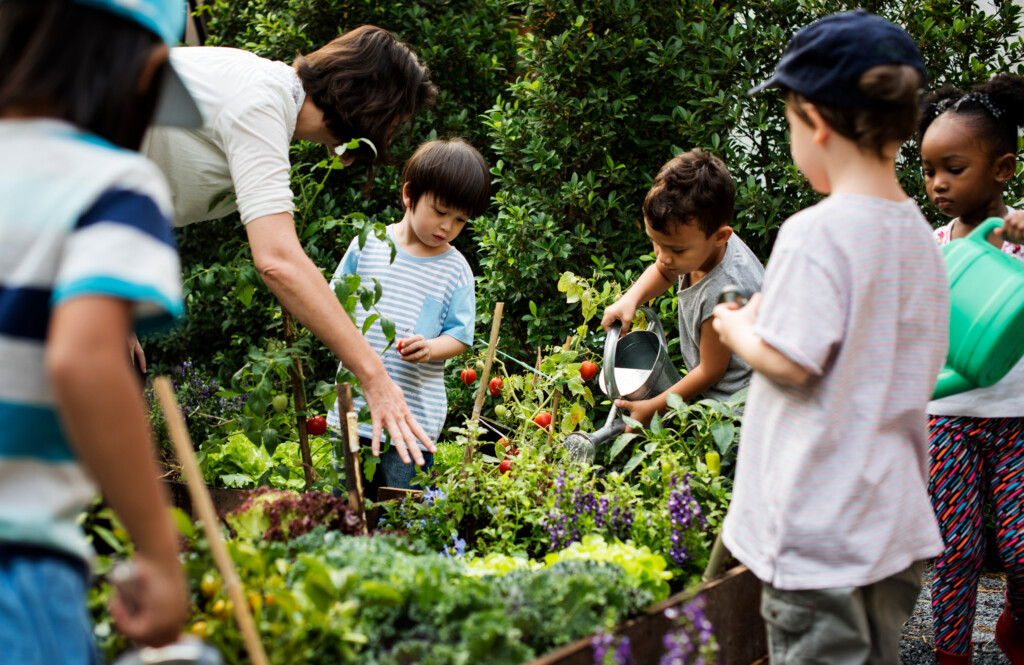Building a Garden with Your Child in 6 Easy Steps!

Now that the snow has melted and the plants are starting to grow, we can start working in our gardens again! Building a garden with your child is a fun way to spend time with them while teaching them about plant growth and even practicing some ESL words! So, let’s get started!
First, you will need:
- A place to plant (part of your yard or a plant box with soil)
- Seeds or seedlings of your choice
- A shovel
- Water
- Optional: Wooden plant signs or paint mixing sticks and permanent markers
Step one:
Choose a place to make your garden. You can use a plant box or container and add soil from the store, use a plot from your community garden, or dig a space out of your yard.
ESL words to practice with your child: garden, soil, yard, and plant box.
Step two:
With your child, choose which seeds or seedlings to plant. Some plants do better in some climates than others, and some plants prefer more shade, while others like direct sunlight. Make sure to consider your garden’s sun exposure and your area’s climate while choosing which seeds to plant. Picking seeds is a great opportunity to teach your child about different plant needs!
ESL words to practice with your child: Seed, seedlings, plants, climate, shade, and sunlight.
Step three:
Use your shovel to dig small holes in your garden with your child’s help to plant your seeds or seedlings. I suggest breaking your garden into sections (either physically or mentally) and keeping each type of plant in its sections if planting fruits or vegetables to make harvesting easier.
ESL words to practice with your child: Shovel, hole, dirt, soil, seed, seedlings, garden, plant, planting, fruits, vegetables, and harvest.
Step four:
Cover the holes with dirt and gently water them with your child’s help.
ESL words to practice with your child: Cover, hole, dirt, and water.
Step five (optional):
Have your child create labels for the plants with wooden plant signs or paint mixing sticks. You can help as much or as little as needed. Have them write the plant names on the wooden signs or mix sticks with permanent markers. Building signs are a great opportunity to practice English plant names and spelling! At the top, you can also add a note of how frequently to water or the date when they should be ready to harvest based on the day you planted the seeds or seedlings.
ESL words to practice with your child: Label, sign, write, various plant names, water, and harvest.
Step six:
Continue to water and take care of the garden with your child based on your seeds or seedlings’ needs. Look at your plants’ harvesting date for vegetables or fruits to know when you can harvest them. Enjoy your garden!
In conclusion: Learning words that are similar across languages, like “carrot” in English and “carotte” in French, is a valuable linguistic bridge. These cognates facilitate language skills by making vocabulary acquisition easier and more efficient. When children encounter such similarities, it reinforces their understanding of word structure, pronunciation, and meaning. This familiarity reduces the learning curve and boosts confidence.
Here are five food-related examples of similar words in French and English:
- Chocolate (English) – Chocolat (French)
- Tomato (English) – Tomate (French)
- Banana (English) – Banane (French)
- Cheese (English) – Fromage (French)
- Coffee (English) – Café (French)
By recognizing these linguistic connections, children can quickly expand their vocabulary in both languages and develop a deeper appreciation for language learning. It fosters a sense of achievement and encourages them to explore more aspects of bilingualism or multilingualism.
Did you enjoy this post? Visit Langmobile’s Blog for more content like this!

